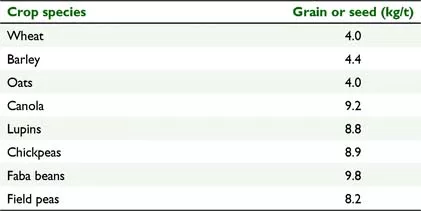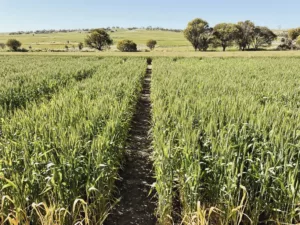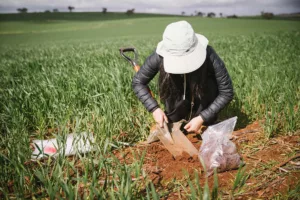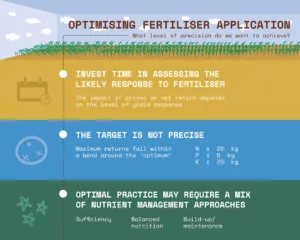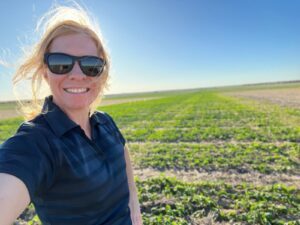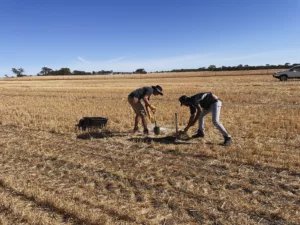AGGREGATE: NEWS & EVENTS
Under the radar: Potassium on loamy soil
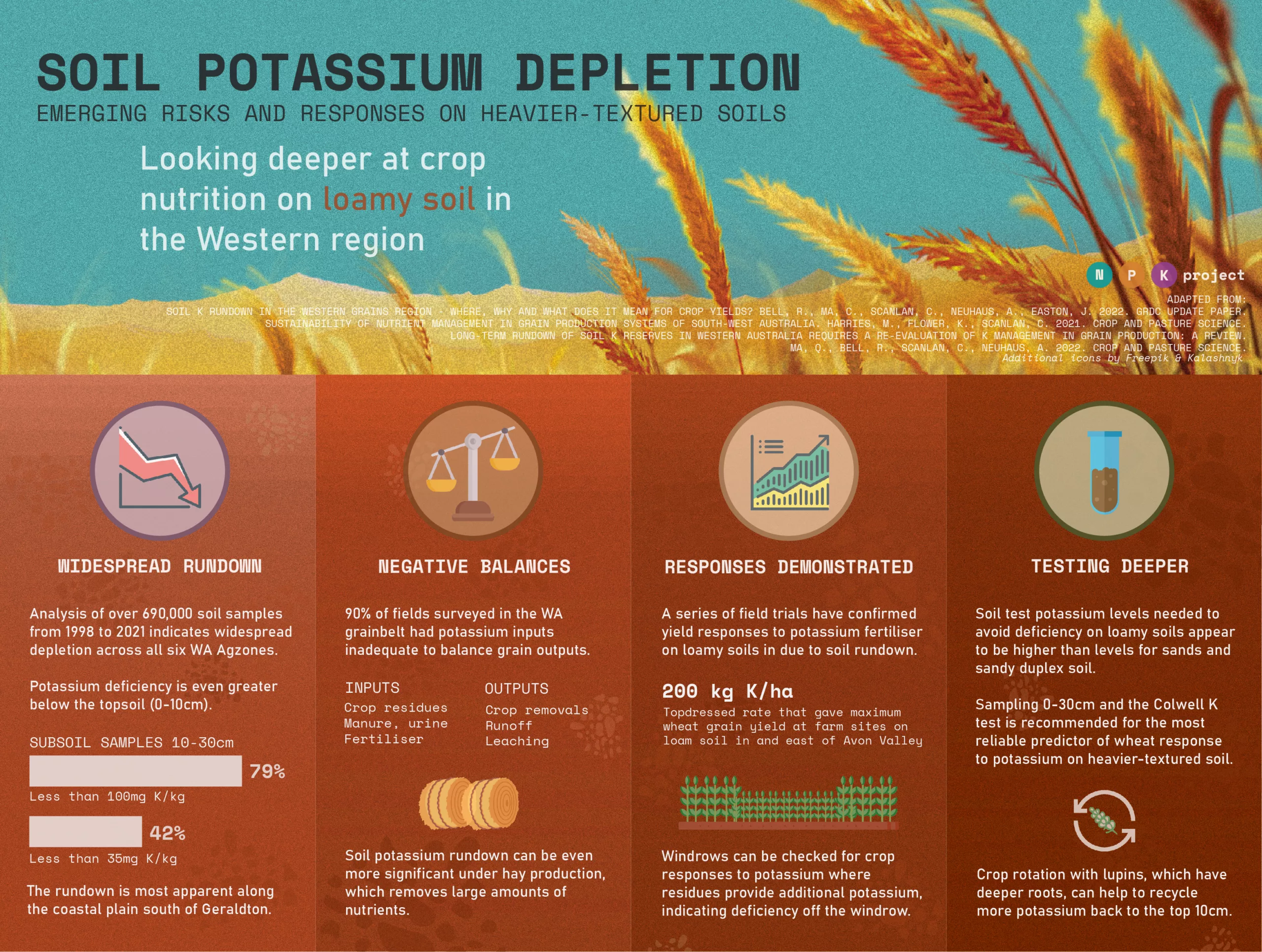
An emerging issue for grain crops in WA
KEY POINTS
- Yield responses to potassium fertiliser are demonstrated on loamy soils due to the run down in soil potassium levels.
- Soil testing to 30cm with the Colwell K method is recommended as the most reliable predictor of wheat response to potassium fertiliser.
- Use windrowing effects in crops to identify potassium responses.

This article was originally published in Farm Weekly by Jasmine Peart and has here been added to.
Potassium levels are low in soils across the state, and farmers are urged to test soil levels to ensure plants are getting enough nutrients this year.
Murdoch University professor and SoilsWest researcher Richard Bell said presuming that farmers didn’t increase their fertiliser rates accordingly, due to high input prices, they may be left with a deficit of many nutrients.
While all nutrients were important, Dr Bell was particularly focused on negative potassium balances, as they were common across farms and would have been exacerbated by the last two years of high yielding crops.
Alongside nitrogen, potassium is required in larger amounts than any other element and is essential for root growth and seed filling. Potassium also provides tolerance to stresses such as drought, frost and some diseases.
“We realised a couple years back that potassium deficiencies were starting to appear on loamy soils. There are a number of possible explanations, but the simplest one is that we run negative balances in our grain cropping. That is, more comes out in grain than is put back in fertiliser."
Professor Richard Bell
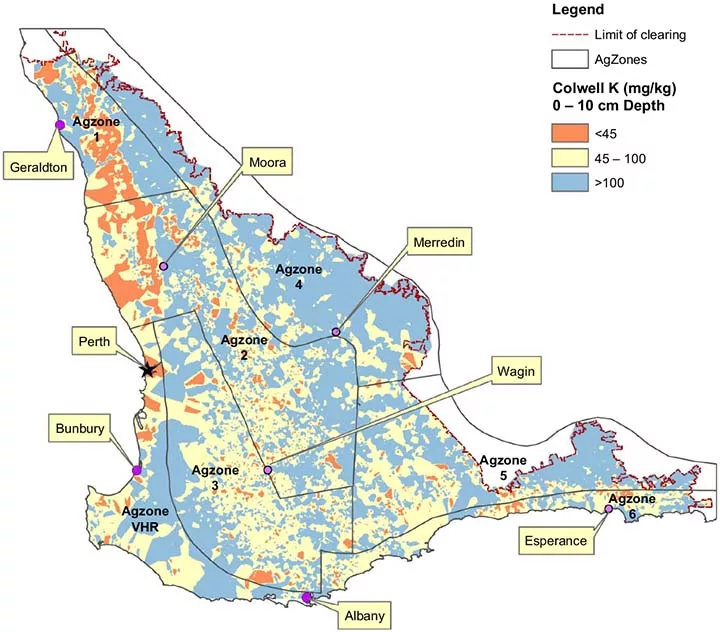
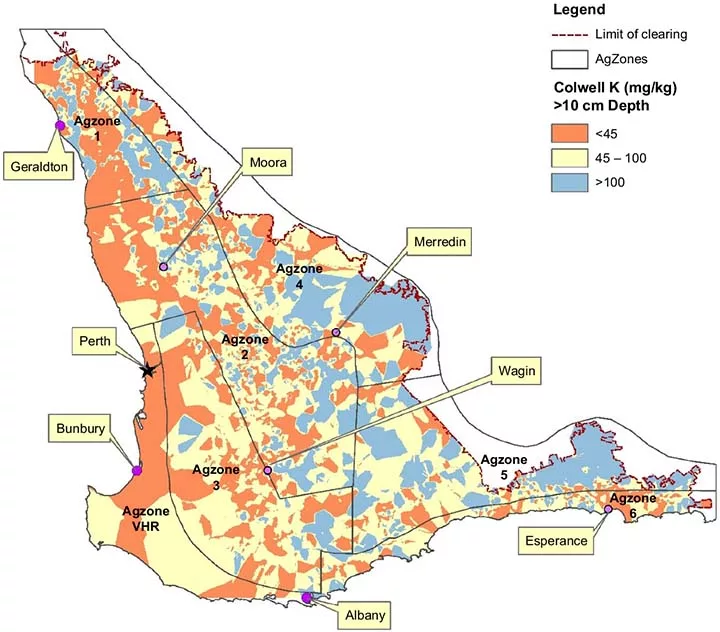
Recent research part of a major GRDC investment in crop nutrition supported by Murdoch University, DPIRD, CSBP, and Summit Fertilisers through the SoilsWest alliance has revealed a range of new findings about how potassium acts in farming systems.
Subsoil assessments are often done by farming advisors to check potassium levels, however a large proportion of samples are done between zero to ten centimetres.
Newer research by Dr Bell has shown that these samples may miss that the “rundown” of potassium is occurring in the subsoil – which is going undetected.
“We'd be suggesting that farmers' advisors look at their potassium balance - so what is in fertiliser, what's removed in grain, and try to minimise the gap between those."
Professor Richard Bell
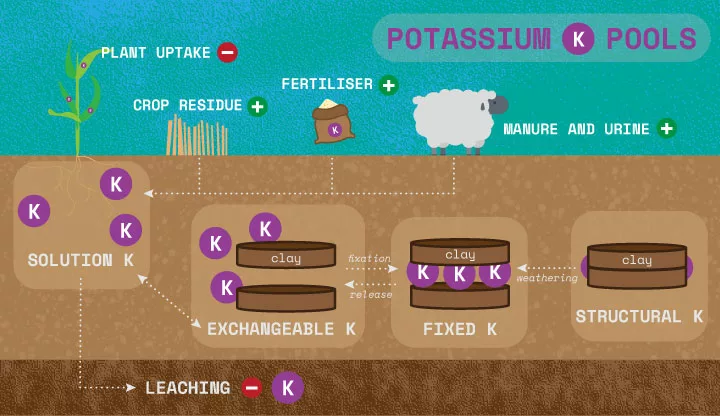
CSBP senior agronomist James Easton said there was a need for farm experts to test soils and plants for potassium, given it was such an important nutrient.
“With the crops we’re growing and the big crops from the last couple of years, potassium is one nutrient that's being pulled out of soils at an increasing rate. So if you look at growers, I think it’s become pretty much what they’re applying year in, year out.”
James Easton, CSBP senior agronomist
With bigger crops and deficiencies across the state, Easton said it was important to think about whether farmers are applying enough potassium.
Especially with the cost of potash increasing in the past two years, it is essential to not cut back too much and instead meet the needs of the crop.
Easton said the state already had a good rate of farmers tracking crops with plant testing. Plant testing is a great opportunity to gauge the status of crops, and can be an indicator of how crops are tracking with all nutrients.
Mr Easton believes the need for plant testing will increase as crops continue to grow in size.
“There could be some things you're missing, and not picking up on some of these deficiencies or not addressing them can be quite expensive. If you’re not getting the yields, it’s effectively more expensive, because you’re not getting the yields to drive down the cost of production."
James Easton, CSBP senior agronomist
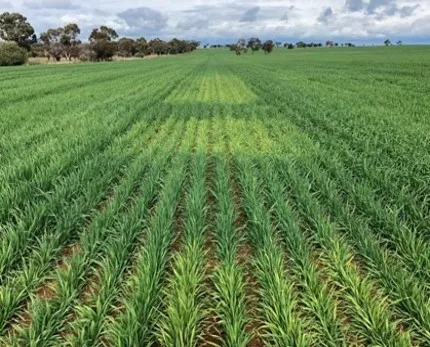
Potassium levels can also be warped by uneven distribution of straw from the back of the header.
According to Dr Bell, most headers are not even with their redistribution, which can lead to waves or strips of crop that look good – while other sections which received low residue look poorer.
“So farmers and advisors could go out and check where they see that pattern and whether it’s related to potassium."
Professor Richard Bell
Especially with heavier textured loamy soils, which is traditionally more nutrient-rich than some other soil types, potassium upkeep is important.
Dr Bell’s research is showing that while these soils have higher reserves of potassium to begin with, they will eventually run out of potassium – while previously potassium deficiencies were thought to only be in sandy duplex soils.
“If you’re running negative potassium balances in cropping for a long period of time, especially with hay making thrown in there, deficiencies will start to show up and farmers will require an improved potassium fertiliser program to maintain crop yields."
Professor Richard Bell
This year is a perfect year to keep an eye on potassium levels in the subsoil and whether it’s getting close to critical levels.
A deficiency can slip under the radar or be confused as symptoms of drought, especially as yellowing around the margins of the leaves only occurs when the deficiency starts reaching around 30-40 per cent.
Over time yellowing will look more severe, and the edges of leaves may look like they are burnt off, but the impact of phosphorus deficiency will be felt on productivity much before the critical 40pc mark.
“That's where the soil testing and testing is important to help you pick up those effects that may not show up as symptoms in the crop."
Professor Richard Bell
Dr Bell said the message was true for nitrogen as well, which was also needed after a big two harvests.
However, with mixed rainfall forecasts, he said he understood why some farmers would struggle deciding how much nitrogen was the right amount this year.
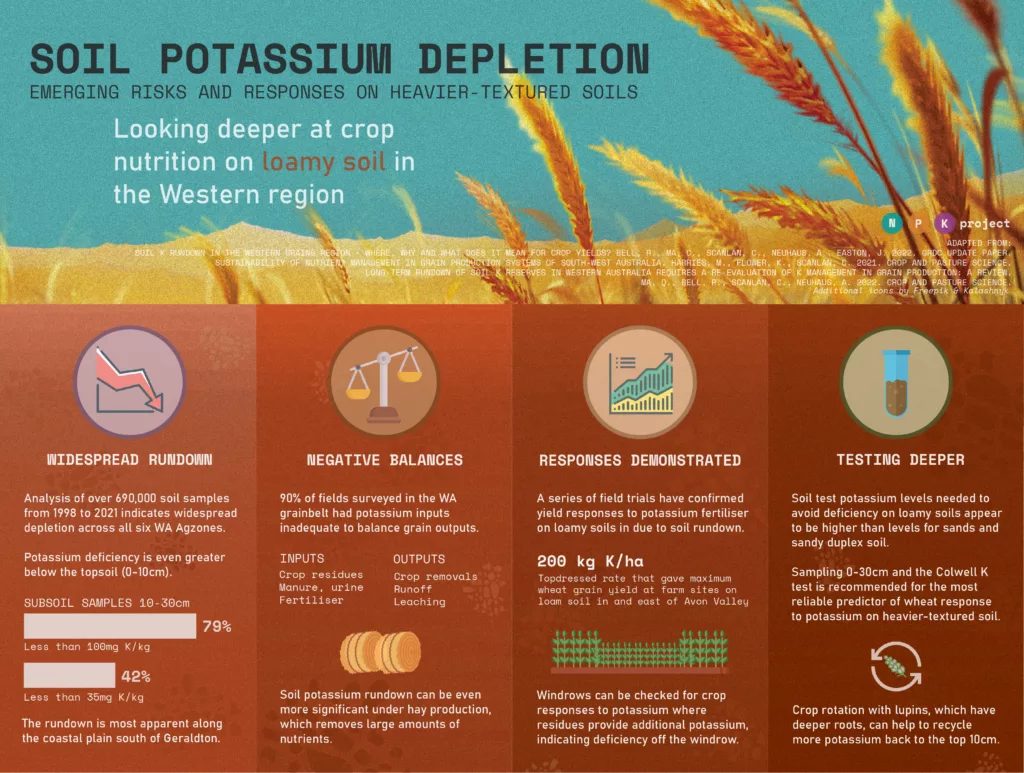
More potassium research from the NPK project:
This article was originally published in Farm Weekly and was authored by Jasmine Peart and has here been added to.
Reference: Ma Qifu, Bell Richard, Scanlan Craig, Neuhaus Andreas (2022) Long-term rundown of plant-available potassium in Western Australia requires a re-evaluation of potassium management for grain production: a review. Crop & Pasture Science 73, 981-996.
This research is part of the GRDC investment ‘Increasing profit from N, P and K fertiliser inputs into the evolving cropping sequences in the Western Region (UMU1801-006RTX)’ and is supported through the SoilsWest alliance by DPIRD, Murdoch University, CSBP, and Summit Fertilisers.
Current projects
MORE STORIES
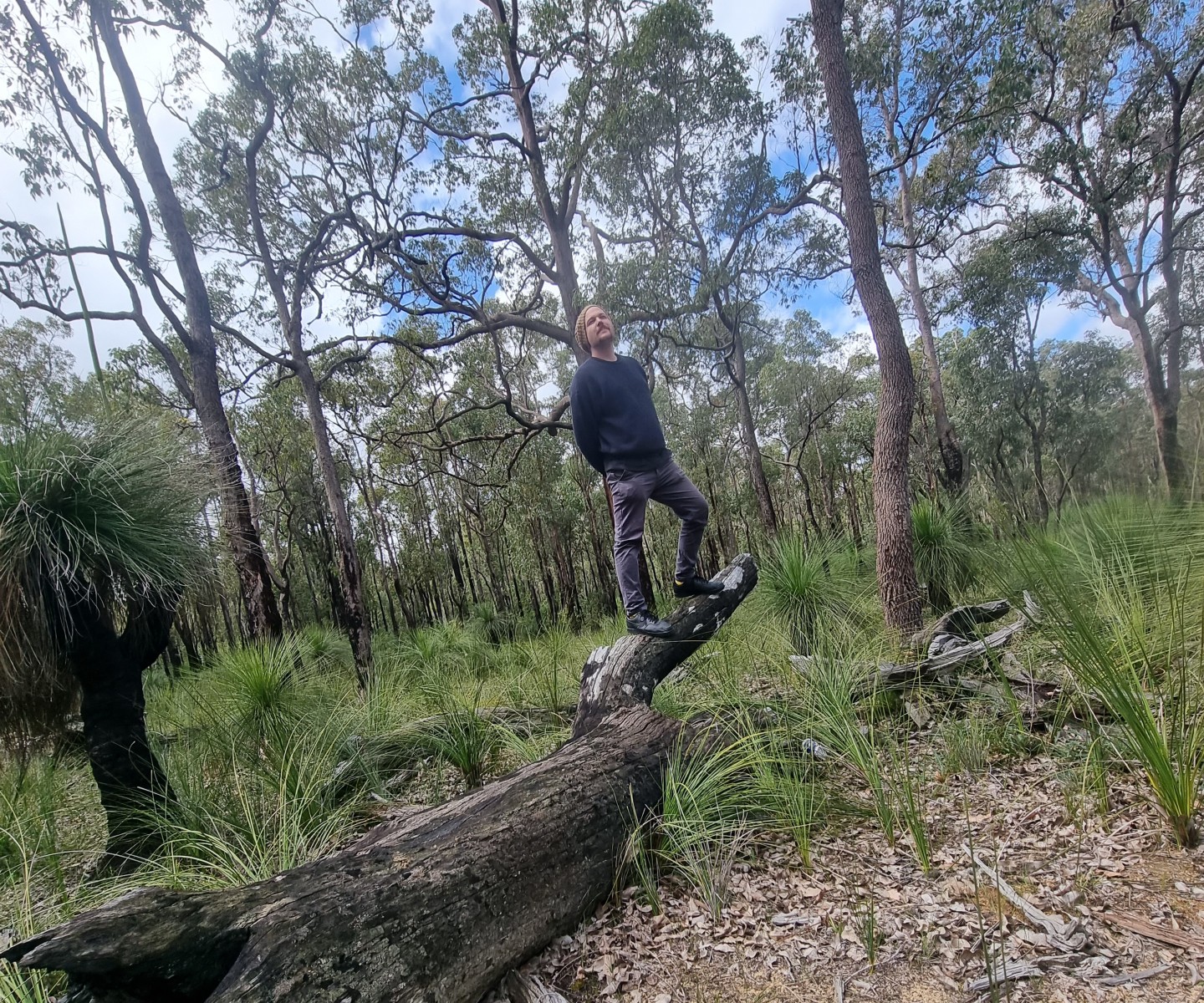
Introducing Steve, Science Communications Coordinator
Steve Lavell recently joined SoilsWest as the Science Communications Coordinator.
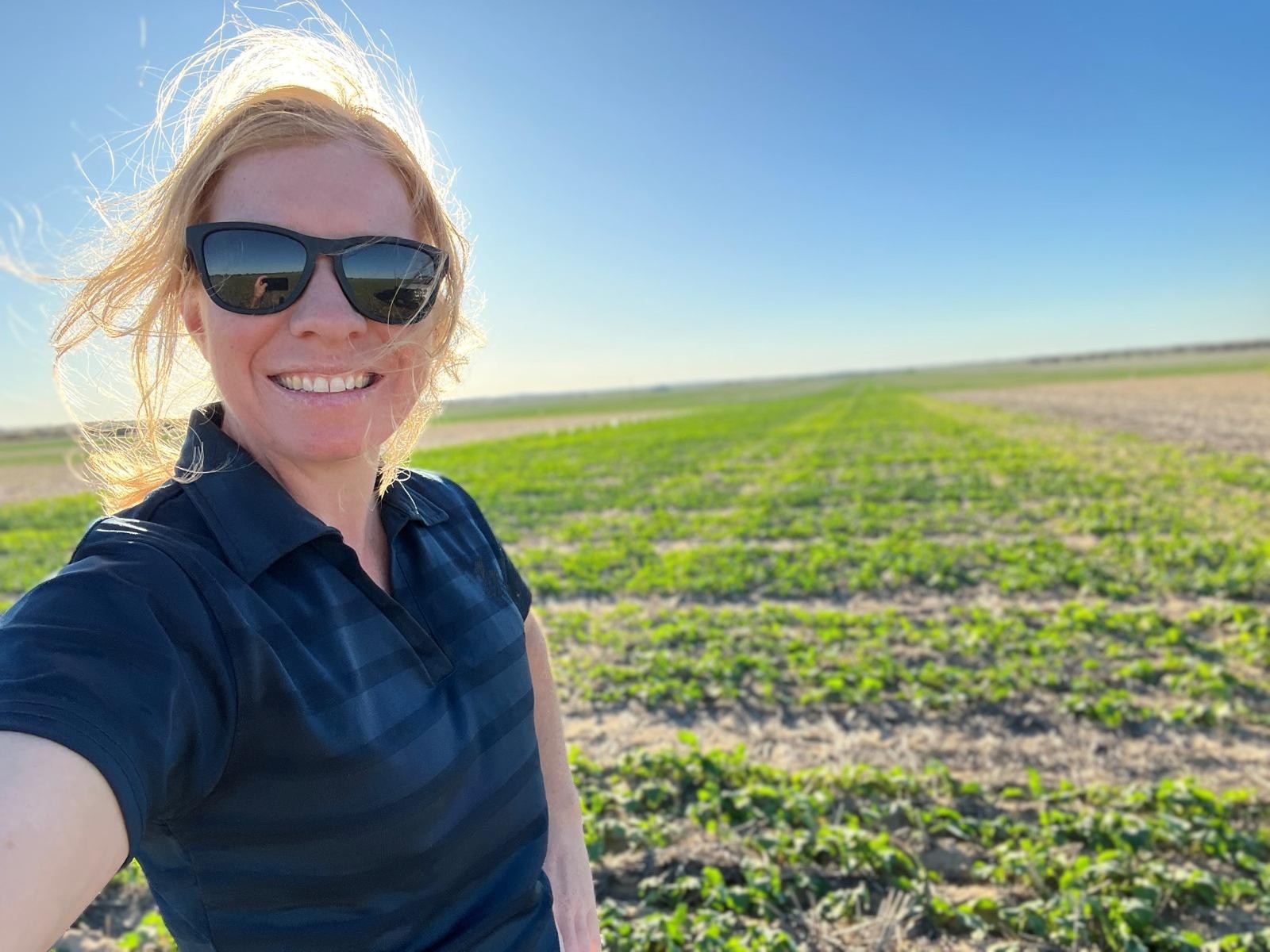
Meet Bridget, our new Regional Soil Coordinator
Briget Watkins was recently appointed as the Southwest WA Drought Resilience and Innovation Hub Regional Soil Coordinator at SoilsWest, Murdoch University.

Agriculture students: Attend the first day of the GRDC Grains Research Update FREE
The free ebook Soil Quality: 10 Plant Nutrition is an interactive, evidence-based resource to better understand and manage crop and pasture nutrition.

New soil knowledge website now online
The free ebook Soil Quality: 10 Plant Nutrition is an interactive, evidence-based resource to better understand and manage crop and pasture nutrition.
